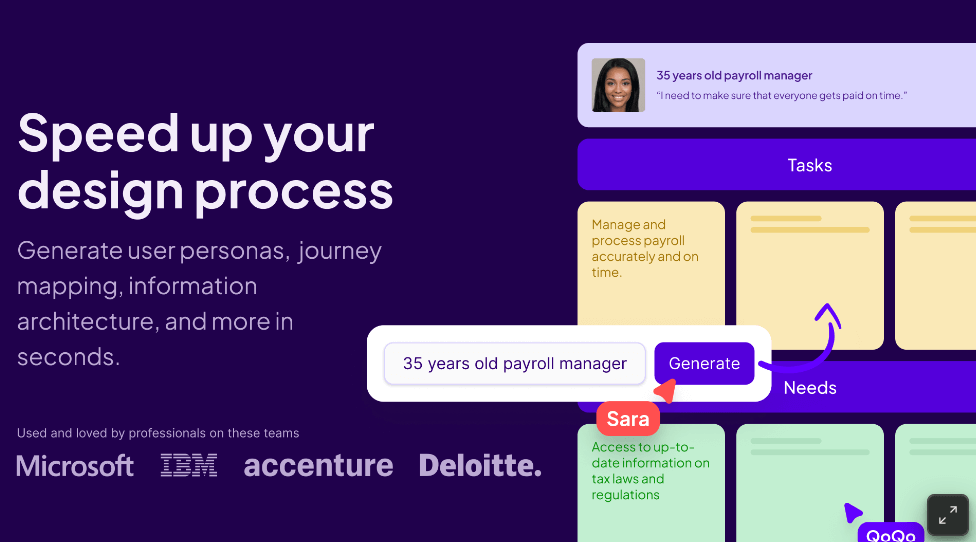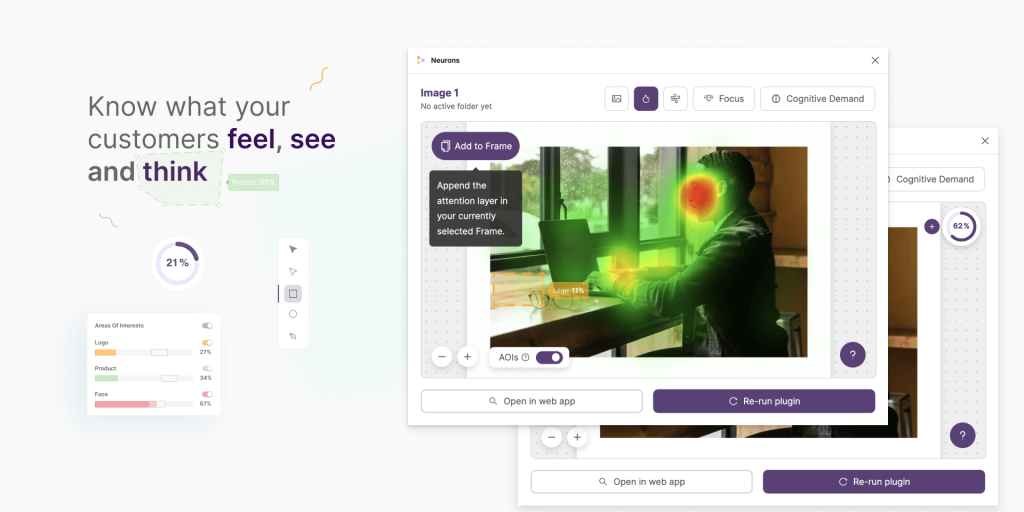Ever wished you had a crystal ball for your user research? What if I told you there’s a way to predict user behavior, streamline workflows, and unlock insights like never before? From generating personas to simulating interactions, these cutting-edge solutions are revolutionizing the way designers understand their audience. In this article, we will be discussing the most significant AI tools for user research. AI tools can improve your business operations significantly. Therefore, updating with the AI world is very essential which is one of the primary goals of this article.
User Insights with QoQo

QoQo stands as a beacon for UX designers, offering an AI-powered avenue to craft meticulously structured user personas. By inputting demographic data or user behaviors, QoQo swiftly generates personas that encapsulate user goals, needs, motivations, frustrations, and tasks. While perfection may elude them, these AI-generated personas serve as invaluable starting points in the quest for understanding users. So, it can be considered as one of the most useful AI tools for user research.
Key AI features
- Persona Creation: Effortlessly generate cards spotlighting user goals, needs, and motivations.
- Task Identification: Uncover user journeys and interactions to fine-tune design elements.
- Design Brief Elements: Forge well-structured design briefs that harmonize with both user needs and project objectives.
Pricing
With QoQo’s suite of user experience tools, including persona generation and journey mapping, priced at $15 per month, embarking on comprehensive user research has never been more accessible. Plus, with a generous 2-day free trial, you can explore these indispensable tools risk-free before committing.
Synthetic Users
Synthetic Users stands at the forefront, providing a groundbreaking solution for simulating authentic user interactions. Through AI-driven virtual research participants, designers can observe lifelike behaviors and preferences unfold. By crafting synthetic participants based on diverse criteria, from demographic data to Myers-Briggs personality traits, designers gain invaluable insights within a controlled yet realistic testing environment. While virtual participants shouldn’t replace real user testing entirely, they offer a vital means to refine designs before engaging with actual users.
Key AI features
- Targeted Audience Testing: Delve into how different user segments interact with products, offering invaluable insights into user preferences and behaviors.
- Organic Insight Generation: Garner detailed feedback and continuously refine products based on genuine user interactions.
- Cost-effective User Testing: With reduced costs per user interview, Synthetic Users makes user research accessible to a broader spectrum of projects, irrespective of budget constraints.
Pricing
Synthetic Users provides a range of plans to suit varying needs, starting with a free plan offering up to 10 interviews per user/month. For enhanced capabilities, paid plans begin at $480 for a 100 Interviews Pack, scaling up to $1250 for a comprehensive 500 Interviews Pack. Discover the power of Synthetic Users in your user research toolkit today.
Neurons Predict

Neurons Predict, crafted by Neurons Inc., revolutionizes user research by foreseeing customer reactions with remarkable precision. Leveraging advanced techniques such as eye-tracking simulations and heatmap preference tests, this tool taps into a rich dataset of real consumer responses. Through meticulous analysis, it unveils how users engage with diverse visual elements, offering unparalleled insights for design optimization. These AI tools for user research can make you experience the future of user research where understanding user behavior reaches new heights.
Key AI features
- Attention Insights: Gauge and Analyze User Focus on Visual Assets
- Cognitive Evaluation: Dive deep into cognitive engagement and processing, utilizing metrics like attention focus, mental effort, understandability clarity, and user interaction engagement.
- Visual Asset Assessment: Conduct swift and comprehensive attention tests, comparing user focus across a spectrum of creative elements.
Pricing
While Neurons Predict doesn’t display pricing on its website, you can reach out to them directly for personalized pricing details. According to some sources, pricing typically commences around $5000 per year, exclusive of any setup fees.
Ando
Ando is an AI co-pilot that makes the design process more intuitive and efficient. It uses machine learning to generate design ideas and offers creative suggestions directly within the Figma environment.
Key AI features
- Automated design tasks: Free up your team’s creative energy by automating routine design tasks
- Font pairing suggestions: Let Ando recommend font pairings that both save time and enhance your design’s readability
- Image generation: Empower your team to generate images from simple descriptions or prompts
Pricing
Ando is a free Figma plug-in—simply install it and you’re good to go.
Recraft AI
Recraft AI emerges as the ultimate solution for swift vector art prototyping, offering an AI-powered artboard capable of generating and editing vector art, icons, 3D images, and illustrations. With its versatile toolkit, you can refine visuals swiftly based on user feedback or project requirements.
Key AI features
- Palette Precision: Seamlessly integrate brand colors to ensure consistency across designs, maintaining an on-brand visual identity.
- Vectorizer: Transform any illustration into high-quality vectors effortlessly, streamlining the output process.
- Text-to-Image: Instantly translate text or sentences into visually captivating images and high-resolution prints using SVG technology.
Pricing
Recraft AI provides a free plan for accessing images stored in the public library. For enhanced features, the paid plan, priced at $25 per month, facilitates faster image generation and includes a private gallery. Elevate your user research endeavors with Recraft AI’s powerful tools today.
How to choose AI tools for user research
Amidst a plethora of options, how do you pinpoint the ideal tool for your team’s needs? Here are some vital factors to consider in your decision-making process:
Align AI tools with business objectives
Ensure that your selected tool aligns with your business objectives. If the analysis of user feedback is impeding decision-making, seek out an AI tool that expedites this process. Conversely, if the creation of UX copy is hindering the launch of new features and the acquisition of users, prioritize an AI tool that aids in copy generation.
Prioritize versatile AI tools
While your primary aim should be to find an AI tool that addresses your current challenges, such as inefficient workflows or a shortage of design resources, don’t overlook the potential secondary benefits. Take into account whether the AI tools you’re evaluating offer supplementary features that could enhance other aspects of your UX design process.
Check compliance and data privacy
Verify whether your selected tool offers the necessary data security measures. Assess the tool’s data handling practices and encryption methods to guarantee the protection of your data or that of your users. Additionally, consider whether the tool complies with local data protection laws, industry standards, and ethical guidelines. Neglecting these aspects could jeopardize the customer relationships you’ve painstakingly cultivated over time.
Conclusion
When crafting your optimal AI-powered UX research tech stack, focus on selecting intuitive tools that offer valuable insights and reliable support when needed. While you may not require every tool listed, exploring different combinations and collaborations can unlock powerful synergies in leveraging AI.
